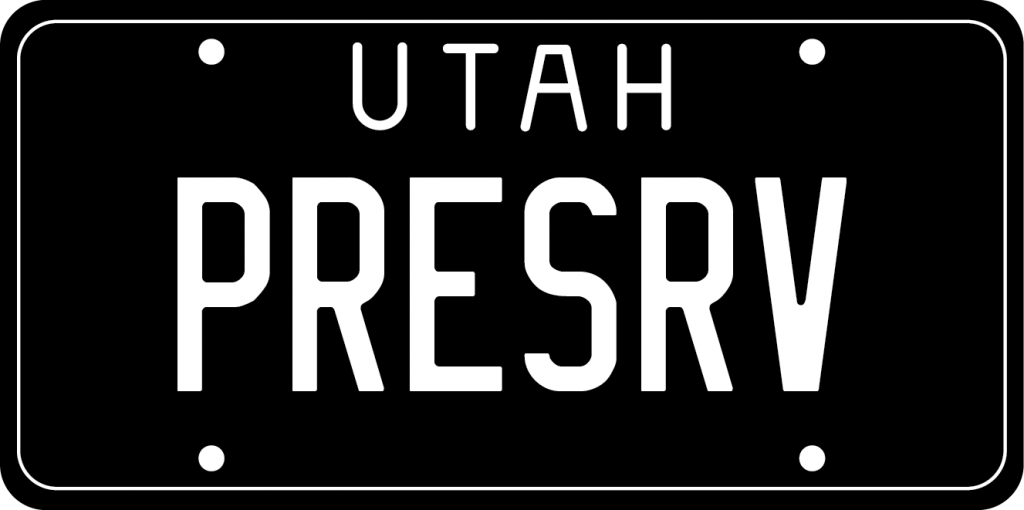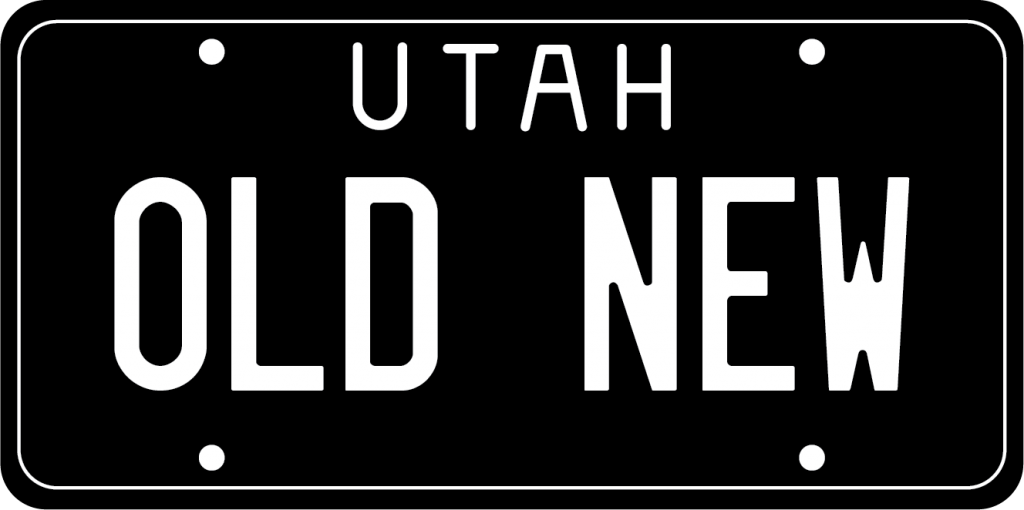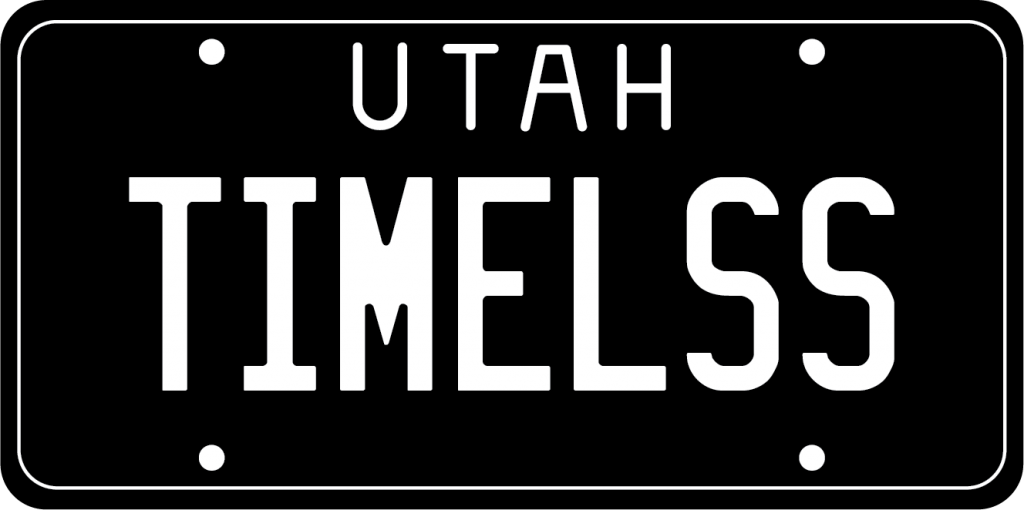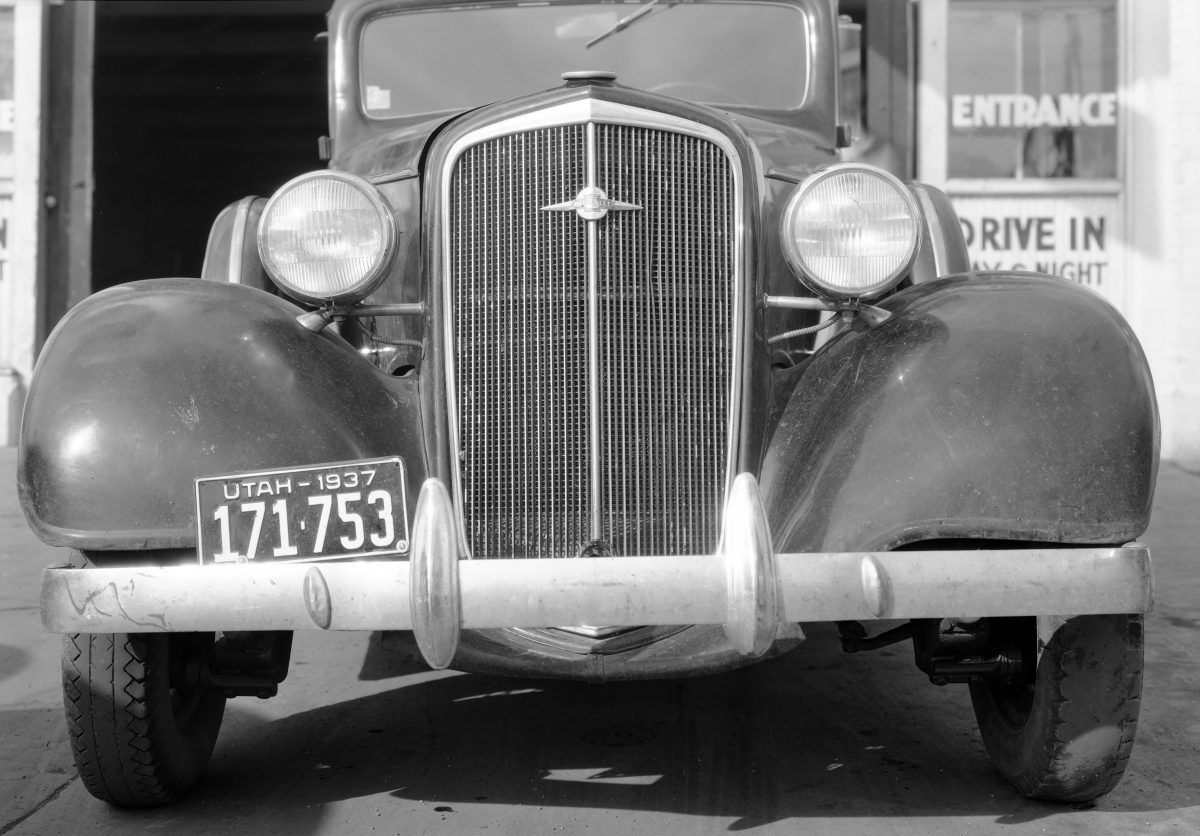By Reneé Leta
Utah’s new black-and-white specialty license plate has been in production for less than a year. With a six-to-eight week waitlist, the demand for the “blackout” plate has been remarkable. It’s a Utah phenomenon that’s part of a national trend, as more than 10 states are now offering similar plates.
In 2018, state Sen. Lincoln Fillmore co-sponsored a bill to create the specialty plate but technical difficulties in creating the reflective lettering blocked production. Five years later, the bill was updated to require only the white letters on the plate to be reflective. This change enabled the production of the license plate to move forward.
A black-and-white license plate in Utah isn’t new, however. Until 1968, changing colors on Utah’s license plates was a near-annual occurrence. Since license plates were first issued in 1909, the Utah Division of Motor Vehicles reports the black-and-white colors were selected 17 times.
Then in 1968, Utah started issuing standard plates where the colors didn’t vary. After that, the black license plate was reserved for vintage vehicles.



“I think simple, streamlined design is what makes the black-and-white license plate so popular,” says Jennifer Ortiz, director of the Utah State Historical Society. “The typography is classic and has a cool, retro feel to it.”
Proceeds from the new black-and-white license plate are earmarked for the Utah State Historical Society, to support the Museum of Utah at the Utah State Capitol complex, including seed money to develop an endowment to support programming.
In January, the Tax Commission reported that more than 86,000 vintage license plates had been issued. The license plate, available through the DMV, is available for an initial $25 fee, and an annual contribution of $25.
For more retro views supporting Utah’s history, subscribe to the Utah Historical Society’s newsletter here.

